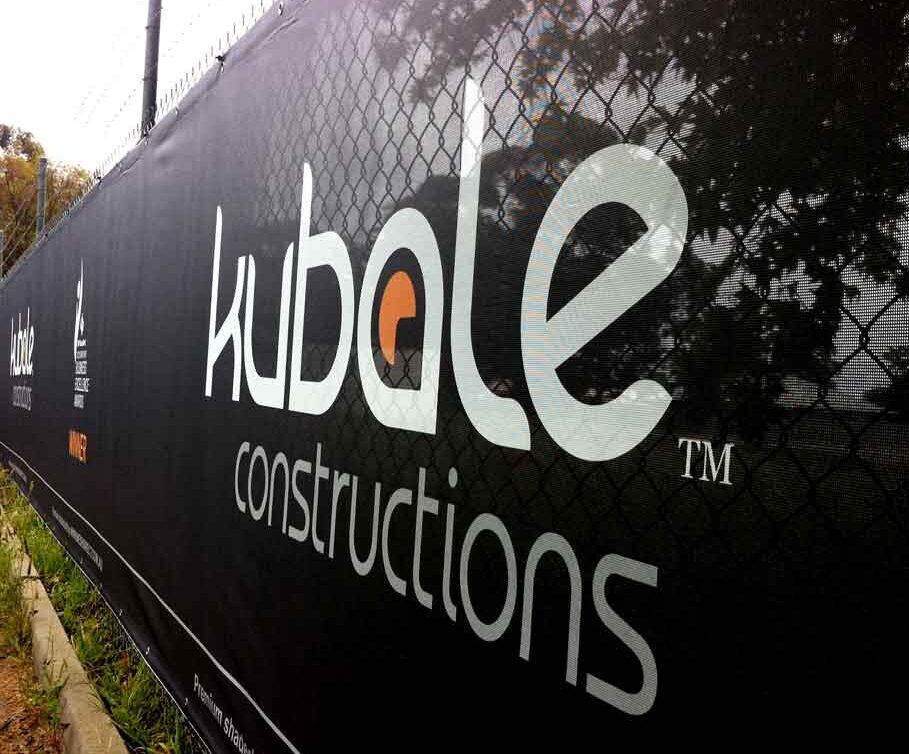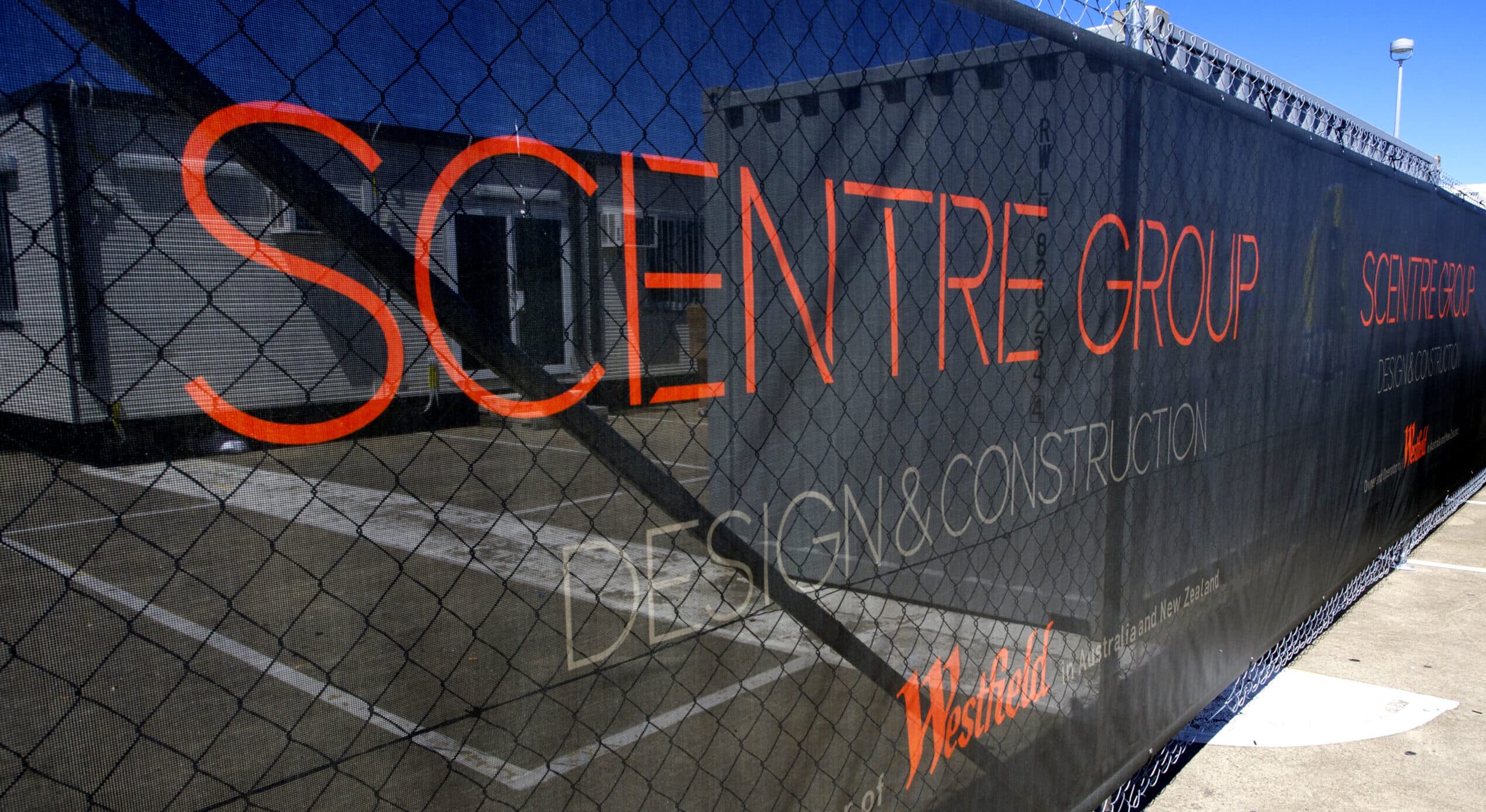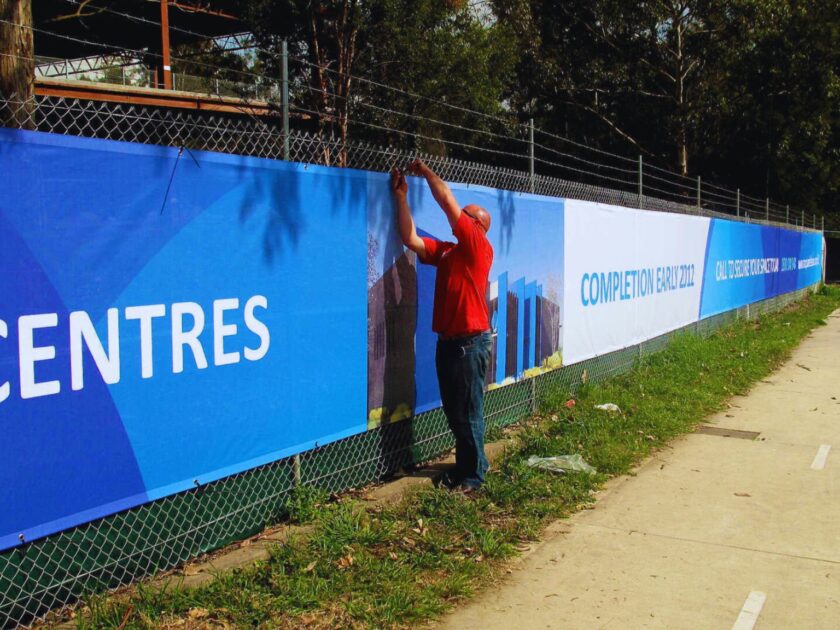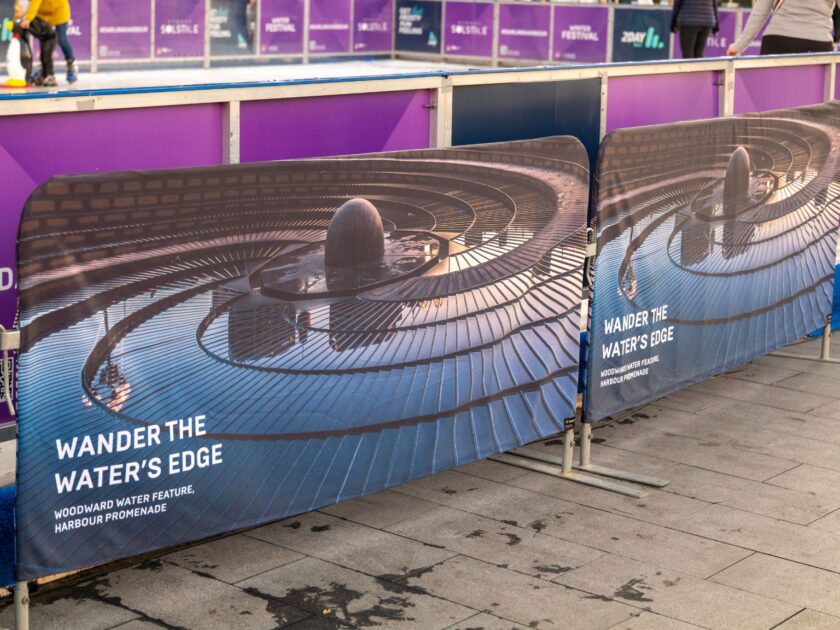Single Sided vs. Double Sided Mesh Printing
 29 September 2020
29 September 2020 3 mins read
3 mins read
Most commonly you’ll find mesh banners being used in outdoor situations, such as; festivals, concerts and construction sites to name a few. Mesh banners allow sound and wind to pass through them making them perfect for such venues. Mesh banners are often utilised for their durability, size and colour compared to other materials.
When it comes to mesh banners, there is a question we often get asked: is double-sided mesh superior to single-sided mesh printing? Let’s take a look.
The criteria chosen to test this debate will be mainly set focusing on visual appearance and effectiveness. Hopefully, by doing this we can get a better idea as to when each mesh printing technique is seen as most successful.
From a visual standpoint, double-sided mesh banners have an important flaw in their overall appearance and that is caused due to them being mainly used outdoors. Printing double-sided mesh is much like holding a double-edged sword, the benefit in this scenario is that you get a design on both sides of a banner for extra brand exposure and this is fine when used for indoor purposes, however, this is not often the case which leads me to the negative. Mesh banners are often seen outdoors which means being caught in the harsh sunlight most of the time people see them, with the double-sided prints this is a problem because both sides of the banner will have ink bleed through to the other side with such strong light, this makes it hard for passersby to see/read the banner when it has a mirror image version bleeding through from the other side of the banner. From a branding perspective, this isn’t great since it makes the advertisement unclear and just looks tacky for the public that sees it, therefore making it counterproductive for advertising in some instances.
On a single-sided banner, this can happen too, but since the other side is blank it will just show a reversed image on the back/blank side which doesn’t affect the side showing to the public, as well as this the overall print quality is also sharper for single-sided mesh, thus making it more effective and favourable in most outdoor situations.
Overall, you can see that the conclusion is another example of indoors versus outdoors, but given the evidence, I’d say the safer bet is with the single-sided mesh – especially if it’s for outdoor use.





